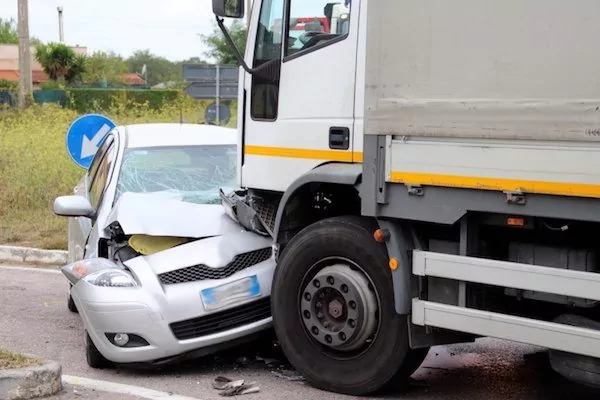The Main Types of Truck Accidents Explained: A Useful Guide

Head-on, rear-end, jackknife – if you’ve heard these terms before but not been entirely sure what they mean, you’re not alone. It can be challenging to determine the differences between various truck accidents, which could be an issue if you or a loved one ever found yourself involved in an incident with a tractor-trailer.
Fortunately, there are just a few key types to remember, and there are differences between them, so you’ll easily be an expert in no time!
Types of Truck Accidents
It can seem quite daunting when you don’t know much about the types of tractor-trailer accidents, but we’ve outlined some of the most widely-occurring ones here so you can learn a little more about what to expect. Keep reading below to get the lowdown.
Head-On
These are often some of the most severe tractor-trailer accidents. They occur when a driver loses control of their vehicle for some reason, perhaps due to tiredness and fatigue, a distraction, or being under the influence of drugs or alcohol.
The driver hits another vehicle in the front, making it usually the most severe truck accident. Head-on collisions may result in serious injury, brain damage, and death.
T-Bone
Also called side-impact collisions, t-bone crashes occur when a truck rides into the side of another vehicle. This usually happens because the driver has run a red light or driven past a stop sign, and they tend to be at intersections.
Although these are relatively rare, they are often severe for those in tanker vehicles and other automobiles. The truck crashes into the other car’s side with such force that any driver or passengers in its way stand no chance.
Wide Turn
The driver swings left before making a right turn rather than risking a tighter right turn. If they aren’t keeping note of their surroundings, like other vehicles at the rear or cars near the sidewalk, there’s a real risk that they might crash into them.
Jackknife
These occur when the driver of a tanker vehicle breaks quickly and firmly when trying to stop. These vehicles comprise two main parts: the trailer and the cab. The hitch connects both sections, and as it’s movable, it pivots whenever the car turns.
The trailer slides outward and gets brought forward against the cab to form a 90-degree angle. The main danger here is that other vehicles might then run into the jackknifed truck and cause a more significant accident involving multiple cars and potentially numerous casualties.
Truck Rollovers
These occur when the driver loses control of their vehicle, and the truck rolls over onto its side. Due to the truck’s size, other vehicles are usually affected too.
Truck rollovers are amongst the most dangerous types of tractor-trailer accidents for the truck driver, and they can count themselves fortunate to come out relatively unscathed. However, tire blowout (more on below) is a common cause of rollover accidents concerning 18-wheelers.
Blind Spots
Of course, blind spots exist regardless of the vehicle you’re controlling, but they are more pronounced in large tanker vehicles. Sometimes referred to as ‘no man’s land,’ the concern is that when the driver tries to change lanes, they might not see other vehicles and come into contact with them.
Drivers can even force other cars off the road, which can often be severe collisions for the other party involved.
Tire-Blowout
Again, tire blowouts can happen with any vehicle, but that doesn’t mean it’s less severe where trucks are concerned. And the issue is twofold.
Not only can the driver lose control of the vehicle and end up traveling in any number of directions, but pieces of the tire can fly out and hit other cars, blocking their view or even causing injury.
Rear-End
There are several reasons why rear-end crashes might occur. For example, drivers may be speeding, driving while distracted, or tail-gaiting the vehicle in front.
The size of trucks makes it difficult to stop, turn, and avoid hazards. Hence, if a car is in front and suddenly stops, it can be difficult for the truck to follow suit before colliding with the other vehicle.
Rear-end collisions can result in severe consequences, from vehicular damage to loss of life. So the FMCSA recommends that truck drivers aim to leave a gap of at least five seconds for the best chances of avoiding a crash.
Under Ride
These are a sub-section of rear-end crashes, but they are more dangerous and carry a lot more risk. This is because instead of the truck rear-ending another vehicle, the other vehicle rear-ends the car in these instances.
They have some of the most severe consequences of tractor-trailer accidents, as a small vehicle can easily slide under the trailer and keep moving until the truck driver stops. But, again, these can occur due to tiredness, distraction, or the driver being influenced by alcohol or drugs.
Lost Load
Your load must be adequately secured when you’re controlling a truck. If the car is overloaded or the cargo isn’t secured adequately, there’s a risk of the load spilling onto the road.
It can be difficult for other vehicles to avoid the incident, so in the most severe instances, there may be a pile-up of multiple cars and the injury and loss that this can invite. If you’ve been affected by a truck in this way, head to this site to find out more about your options.
Dealing With the Accident
These are the most common types of truck accidents. Hopefully, now that you’re more familiar with the issues you might encounter, you’ll be well-equipped to deal with everything if you or a loved one suffered injury or loss from a truck accident and speak to a tractor-trailer accident lawyer.
For more advice on taking care of yourself and your family, check out some of our other posts.

